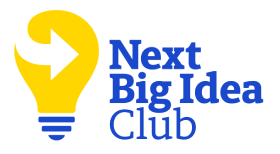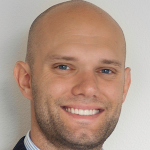Jake Knapp is a designer, investor, and general partner at Character Capital. He has spent the last 25 years helping companies create products that people genuinely love. He helped build Gmail, co-founded Google Meet, and has worked with hundreds of startups, including Blue Bottle Coffee, One Medical, and Slack.
What’s the big idea?
The foundation of success is shockingly simple, and yet most teams get bogged down for months trying to strategize a new idea. Making your next big project a hit relies on creating a powerful Founding Hypothesis from the get-go. When done right, this method ensures that everyone’s voice gets heard, there is enough clarity to accelerate experimentation, and a smart product gets to stand in a dazzling spotlight. Rather than wasting time, money, and missing opportunities, starting a project thoughtfully allows teams to move confidently and quickly toward solutions.
Below, Jake shares five key insights from his new book, Click: How to Make What People Want. Listen to the audio version—read by Jake himself—in the Next Big Idea App.
1. Project beginnings are a hidden goldmine.
The beginning of a new project is a moment of massive opportunity. With a strong beginning, we define the right strategy, gain confidence, and build momentum. Without a strong beginning, it’s nearly impossible to succeed.
Beginnings are crucial, but beginnings are totally overlooked. The world’s most popular approach to starting projects is chaos. Meet, and meet, and meet. Talk, and talk, and talk. Churn out slide decks, documents, and spreadsheets that no one reads. Outlast your opponents in a political cage match. Finally, rely on a hunch and commit to years of work.
That’s the old way—and it is bonkers. Doing things the old way, it can take six months or more to develop a strategy. The old way is like assembling IKEA furniture by tossing parts, an Allen wrench, and a dozen squirrels into a broom closet, then hoping for the best.
We don’t have to accept the old way. We can redesign how we start projects. We can structure the first hours so that we get the best contribution from every team member, make smart decisions, and find a winning strategy as fast as possible.
2. Most teams skip the basics.
Teams that build winning products share some fundamental traits. They know their customers, and the problem they can solve for them. They know which approach to take—and why it’s superior to the alternatives. And they know what they’re up against—and how to radically differentiate from the competition. These teams have mastered the basics.
When I first began working with startups, I was embarrassed to ask founders basic questions like “Who are your competitors?” or “How will you differentiate?” because I didn’t want to waste their time or appear naive.
“Smart, motivated people who respect their colleagues can still struggle to get on the same page.”
But once I worked up the courage, I learned that if I asked three co-founders to write down their startup’s target customer, I got three different answers. If I asked a team what differentiated their product from the competition, I would witness a sixty-minute debate. Smart, motivated people who respect their colleagues can still struggle to get on the same page. Mastering the basics might be obvious, but it’s not easy.
3. A clear strategy starts with a clear calendar.
Business as usual stands in the way of mastering the basics. In the modern workplace, we’re supposed to attend meetings with teammates, managers, business partners, etc. We’re supposed to stay on top of our email and messages. We’re supposed to juggle multiple projects. And, of course, we’re supposed to meet deadlines and deliver results.
But if we think we can take on ambitious projects and make them click with customers while bouncing along through business as usual, ricocheting from one context to the next, we’re fooling ourselves. Figuring out a project’s strategy takes intense focus. Choosing the best opportunity among many options takes intense focus. Designing and building a prototype to test our hypothesis? Yup, that, too, requires intense focus. The normal way of working does not allow for intense focus—especially intense focus that is shared by multiple members of a team.
The solution is straightforward: make the difficult decision to call a timeout, drop everything—all the constant emails, constant meetings, constant context switching—and come together to think hard, make big decisions, and master the basics.
4. Silence and structure generate the best ideas.
The group brainstorm is our species’ natural response to collaboration. Gather a bunch of hunter-gatherers from the Ice Age and ask them to build a hut, and you’ll get a group brainstorm. Gather a bunch of Royal Society scientists from 17th-century England and ask them to come up with a business plan, and soon they’ll be shouting ideas and ordering out for pizza and sticky notes.
“The normal way of working does not allow for intense focus.“
Group brainstorms are in our DNA. They’re fun—at least, for extroverts. But they don’t work. They produce mediocre ideas. They exclude those uncomfortable in the group, those who don’t excel at verbal sales pitches, and those who do their best thinking in silence.
When it’s time to define your strategy, do not brainstorm out loud. Do not have an open-ended discussion. Instead, work alone together. Give each person time to generate proposals in silence, review others’ proposals in silence, and form opinions and vote in silence.
5. Strategy is better understood as a hypothesis.
Until a solution clicks with customers, “strategy” is just an educated guess. In one way or another, that guess is almost certainly wrong. Maybe we’re differentiating on speed when people care most about simplicity. Maybe we chose the wrong problem or the wrong customer. First guesses might be off by a lot or a little—but they are almost always off.
So, instead of writing strategy documents, start with a Founding Hypothesis. A Founding Hypothesis is a simple Mad Libs-style sentence that describes the essential guesses behind every project: “If we solve [problem] for [customer] with [approach], then they will choose it over [competition] because our solution is [differentiation].”
“First guesses might be off by a lot or a little—but they are almost always off.”
The Founding Hypothesis is simple, and that’s exactly what makes it powerful. Products click when they make a compelling promise. That promise must be simple, or customers won’t pay attention.
Best of all, once you’ve written a Founding Hypothesis, there’s no hiding behind slides, charts, and projections. Your educated guess is standing in a dazzling spotlight, and you’ll want to experiment, right away, to find out if the hypothesis is correct.
Enjoy our full library of Book Bites—read by the authors!—in the Next Big Idea App:










